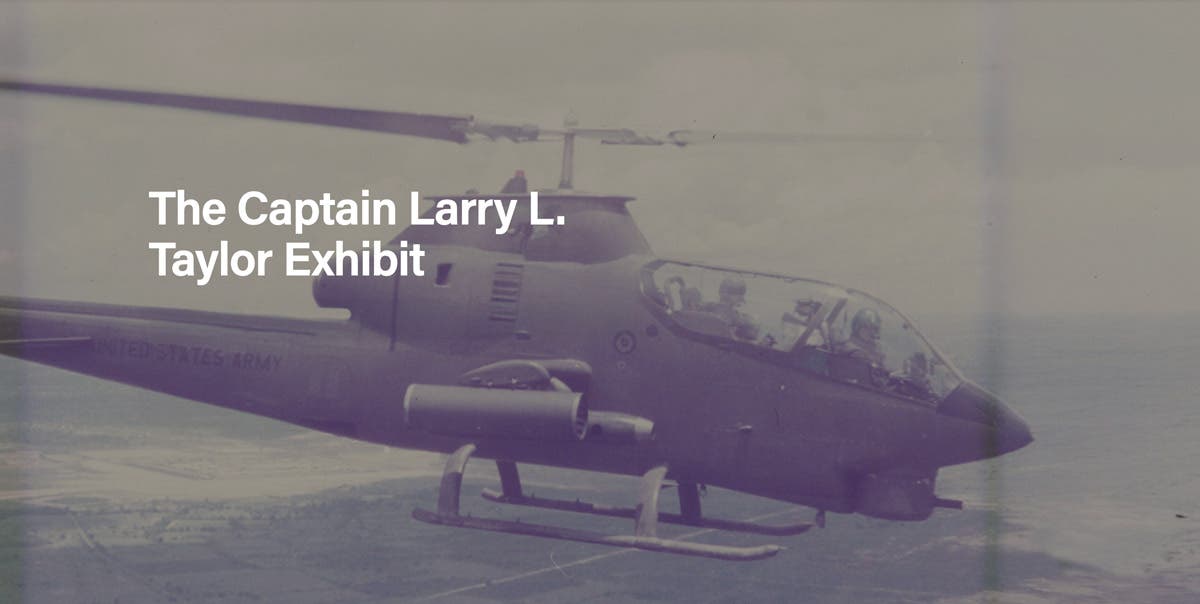Major Richard “Dick” Winters’ helmet has a new home
Wilson History & Research Center receives hero’s Korean War-era helmet Major Richard “Dick” Winters was the well-known D-Day commander of Easy Company, 506th Parachute Infantry Regiment, 101st Airborne Division, whose…
Wilson History & Research Center receives hero’s Korean War-era helmet
Major Richard “Dick” Winters was the well-known D-Day commander of Easy Company, 506th Parachute Infantry Regiment, 101st Airborne Division, whose service was chronicled in the book and HBO miniseries Band of Brothers. Fifteen years ago, Major Winters gifted the helmet he wore during the Korean War to a friend, Robert Hoffman.
Following Winters’ passing earlier this year at age 92, Hoffman decided to gift the helmet—one of the most sought-after pieces of 20th-century military headgear—to the Wilson History & Research Center in Little Rock, Arkansas. The helmet was presented by Hoffman to the Center’s founder, Robby Wilson, at a ceremony hosted by Arkansas Gov. Mike Beebe on Oct. 20, 2011.
MAJOR RICHARD WINTERS
Dick Winters’ storied World War II journey took him through some of the toughest fighting of the European Theater, including Normandy, Market Garden and Bastogne. He began the War as a Lieutenant and platoon commander in E Company of the 506th Parachute Infantry Regiment, 101st Airborne Division, and ended the War in 1945, a battle-hardened veteran and commander of the 506th 2nd Battalion, holding the rank of Major. Major Winters received several medals for his WWII service, including the Distinguished Service Cross for his leadership on the successful assault against a German artillery battery at Brécourt Manor, for which he was also recommended to receive the Congressional Medal of Honor. He was deeply respected by the troops serving under him as a great combat leader.
After the WWII, Major Winters was discharged from the Army and began working with his good friend, Captain Lewis Nixon, whom he served with in the 506th, at Nixon Nitration Works in Edison, New Jersey. He married his wife, Ethel, in 1948.
In 1951, the Army recalled Major Winters to active duty, and he served as a training officer in the 364th Infantry Regiment stationed at Fort Dix, New Jersey. Having seen enough combat and war, Major Winters avoided going to Korea after he was offered the chance to resign his position shortly before being shipped out.
Major Winters worked several jobs after his discharge before settling down with his wife and family in Hershey, Pennsylvania, retiring in 1997. His heroic actions and those of “Easy” Company during World War II gained him worldwide fame through the book and HBO miniseries, “Band of Brothers,” by Stephen Ambrose. In 2006, he published his memoir, Beyond Band of Brothers.
MAJOR WINTERS’ HELMET
Major Winters wore this helmet after being recalled to service for the Korean War, serving as a regimental training officer of the 364th Infantry Regiment stationed at Fort Dix, New Jersey, from 1951-1952. The helmet is a late-WWII type with hinged chinstrap loops and a latter production heat lot number of 1189C (from around early 1945). Featured on the front, over the textured olive-drab paint finish, is a hand-painted, gold-colored oak leaf insignia designating the rank of Major.
The helmet liner features Winters’ name boldly painted in white on the front below another hand-painted gold-colored oak leaf. The 364th Infantry Regiment coat of arms is well-rendered on either side, hand-painted in white, blue and green above a silver scroll bearing the regiment’s motto, “Cross and Oak.” An officer’s vertical white stripe is painted on the back. Inside, the liner shows all the markings of late-WWII construction, with a light shade of olive-drab cotton-twill webbing and a leather sweatband. Winters positioned the back of the sweatband onto the rear neck strap, which was a popular adjustment during WWII.
The Wilson History and Research Center (WHRC) is a 501c3 charitable foundation serving in accordance with our charter. Their goal is to display complete collection of every piece of military headgear developed, produced and modified by every country during the 20th century. For further information, please visit www.militaryheadgear.com.
Established in 1993, Military Trader is dedicated to the collecting preservation, restoration, study, and display of historic military artifacts. Spanning interests from military uniforms to medals, or helmets to ordnance and weapons, Military Trader is your best source for in-depth techincal articles, artifact profiles, product and hobby news, current values, and show and auctions calendar.






